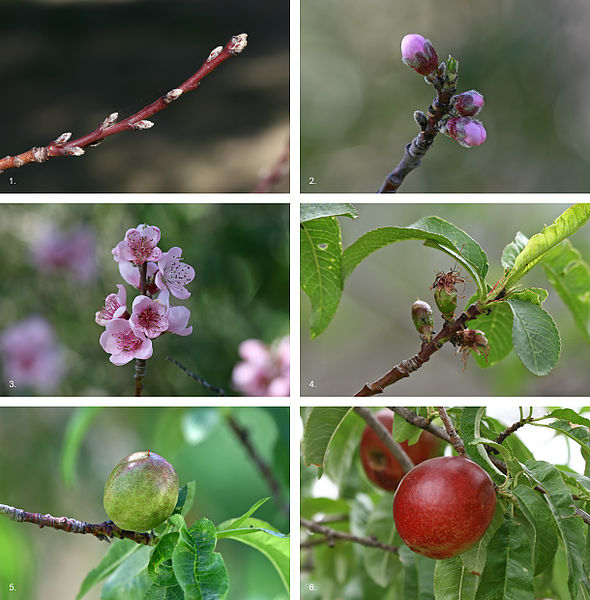I started writing the entry on different types of dry fruits but decided to first take a step back. We're going to eventually cover nine types of dry fruits and though it's easy to explain the difference between an dehiscent and indehiscent fruit (the dehiscent dehisce, or open at maturity to release the seeds, while the indehiscent reamin closed), it gets a bit more complicated when narrowing it down further. Specifically, we need to know how many carpels have fused together in order to form the fruit, and I think the best way to go about that is to gain an understanding as to how the flower actually transforms into a fruit.
| Diagram of a mature flower cross-section, via wikipedia |
This vocabulary was what tended to be my undoing when taking Botany, but I think maybe if I link it back to a few examples I've already discussed it will make a little more sense.
As we know from our brief discussion of winterberries, flowers have distinct "male" and "female" parts. Since winterberries are monoecious, they do not have both these parts on the same flower. The flower in the diagram above however, seems to be diecious, having both parts.
The "male" part is referred to as the stamen, consisting of an anther attached to a filament. The carpel is the "female" part, with the style connecting the stigma to the ovary. I had mentioned the exaggerated stamens and carpels of the Amaryllis flower as seemingly "beckoning" in a pollinator, and though the style of the Amaryllis is much longer than that of the flower in the above diagram, I'd encourage you to take a look at those photos again if you want to try your hand at finding these parts on an actual flower.
The journey from flower to fruit begins with pollination; a pollen grain (more or less the microsporangium in the diagram above) enters the stigma, traveling down the style into the ovary, and making contact with the ovule, forming a zygote.
The ovule or ovules then begin developing into seeds. the ovary on the other hand, begins to enlarge and form a fruit. The stigma, style, petals, sepals, and stamens will all fall off (or excuse me, dehisce). As the ovary continues to develop, it begins to mature into a fruit, in many cases with clear exocarp, mesocarp, and endocarp layers becoming evident. Finally, we're left with a familar fruit, usually falling from the plant when ripe.
The above video shows a fairly good animation of the process, but I think this six-image sequence of nectarine development from wikipedia is very effective at showing what is essentially the life-cycle of a flower. Let's walk through it:
 |
| Dynamic sequence from Wikipedia showing nectarine fruit development, accessible from their Drupe article |
- Plant is dormant, not putting energy into flowering until the warm season
- Flower buds begin to swell and prepare to open. Note the sepals, protecting the emerging flower in this fragile period.
- Flowers open fully, awaiting a pollinator.
- Flowers have been pollinated, with sepals and petals falling off. Stamens and possibly stigmas appear to still remain, but most noticeable is the ovary, already beginning to swell.
- Ovary continues to mature into a fruit with distinct endocarp, mesocarp, and exocarp tissues probably evident.
- Ovary has fully ripened, resulting in the nectarine, a mature drupe.
Alright, I think we now have a fairly good appreciation for how a fruit comes to be. Next time I'll talk about dehiscent fruits, and maybe post another photo or two if I get the chance to take one... raining today. Still working through my flickr photostream though so maybe I'll find an old one.

:D
ReplyDeleteSUP
ReplyDelete